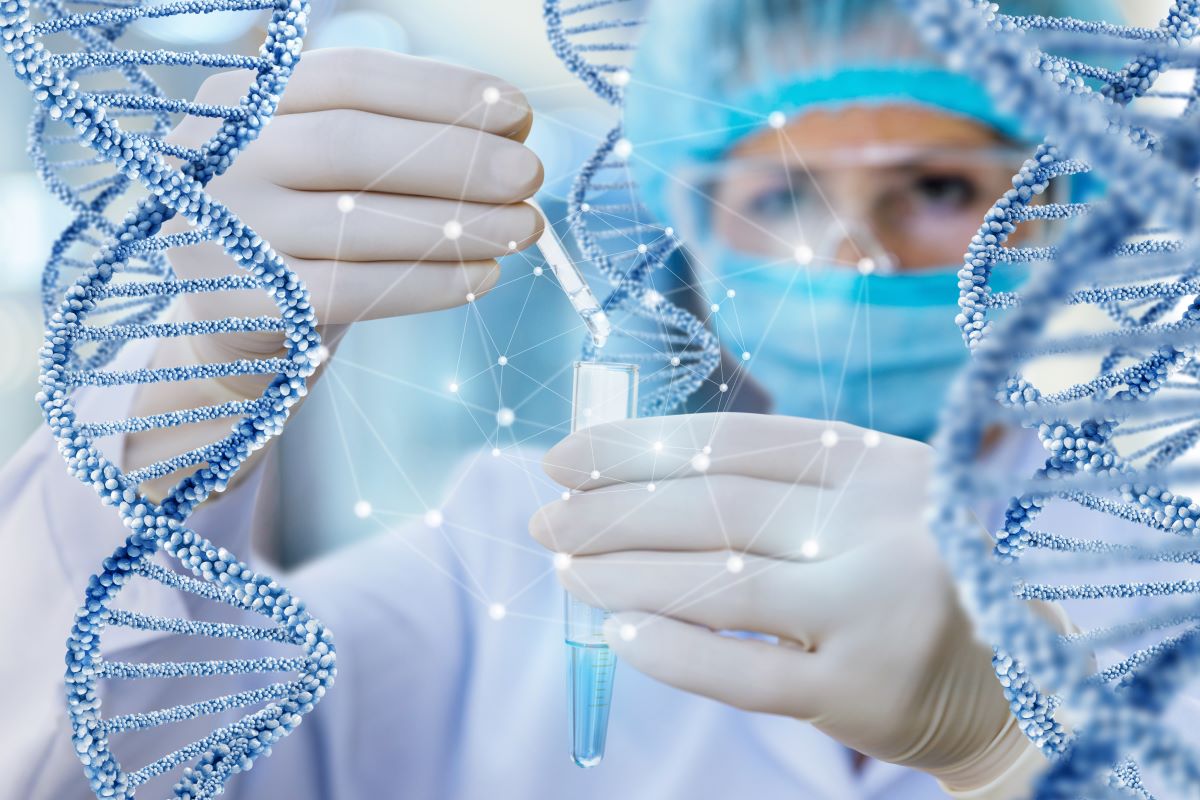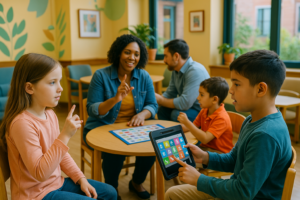Introduction
Mutations in the LMBRD2 gene are rare and can lead to complex developmental disorders in children. These mutations, often referred to as “de novo” (not inherited from the parents), cause a range of symptoms, from motor delays to neurological abnormalities. This article aims to clearly explain the impacts of these mutations and provide informational support to families affected.
The Role of the LMBRD2 Gene
The LMBRD2 gene is essential for the proper functioning of our body. While its specific functions are not yet fully understood, researchers believe it plays a key role in:
- Intracellular transport: The LMBRD2 protein helps move molecules and signals within cells, a process essential for their proper functioning.
- Regulation of metabolism: It may help convert nutrients into energy or building blocks necessary for the body.
- Molecular communication: It contributes to signalling between cells, ensuring coordination between tissues and organs.

The Impacts of LMBRD2 Mutations
Mutations in this gene can disrupt these critical functions, leading to various symptoms. Here are the main issues faced by children with LMBRD2 mutations:
Motor Delays
- Late walking (between 20 and 36 months).
- Difficulty sitting or crawling at the expected age.
- Progressive spasticity (muscle stiffness) in the lower limbs, causing rigid movements.
Language Delay
- Late language development, with limited vocabulary (20-50 words in some children).
- Absence of speech in more severe cases.
Intellectual Disability
- Overall developmental delay in intellectual abilities.
- Developmental regression: loss of previously acquired skills.
- Difficulty establishing complex interactions with the environment.
Brain Abnormalities
- Thinning of the corpus callosum: The corpus callosum is the structure that connects the two hemispheres of the brain. Thinning can affect communication between the two sides of the brain.
- Hypomyelination: A reduction in the protective myelin sheath that covers nerve fibers, affecting the transmission of signals in the nervous system.
- Periventricular heterotopias: Abnormalities in the structure of the brain, where nerve cells are misplaced in areas where they should not be.
Microcephaly
- Smaller head size than normal (up to -3.4 standard deviations from the average).
Motor and Physical Disorders
- Wide-based gait: A walking pattern with feet positioned farther apart.
- Knee contractures: Abnormal tightening of the muscles or joints around the knee.
- Camptodactyly: A condition where fingers are permanently bent.
- Small or malformed teeth.
Seizures and Sensory Disorders
- Muscle spasms and recurrent epileptic seizures.
- Deafness or partial hearing loss.
Understanding the Variability of Symptoms
The manifestations of an LMBRD2 gene mutation vary from one child to another. These differences depend on the location and severity of the mutation, as well as environmental and genetic factors specific to each individual. Some children experience mild symptoms, while others may have more severe disorders.
Diagnosis and Support
Advances in genetics now allow for the identification of LMBRD2 mutations through genetic tests. These tests analyze DNA to detect anomalies, providing an accurate diagnosis.
Once the diagnosis is established, it is crucial to:
- Implement specialized medical follow-up: neurologists, speech therapists, physiotherapists, etc.
- Offer support to families: inform them about the child’s condition and guide them through their journey.
- Promote research: Scientific discoveries are essential for understanding these mutations and developing new treatments.
Key Points for Families
- The LMBRD2 mutation is “de novo”: It appeared spontaneously and was not inherited from the parents.
- There is no need for guilt: This mutation is caused by a natural error in the DNA replication process.
- Every child is unique: Symptoms and their severity vary from case to case.
Supporting Research for Better Understanding
Mutations in the LMBRD2 gene remain an active area of study. Supporting research helps to better understand these disorders, develop more accurate diagnostic tools, and, hopefully, find appropriate treatments.
If you are a parent of a child affected, know that you are not alone. Many support groups and organizations work to provide resources and raise awareness about this condition.
Conclusion
Mutations in the LMBRD2 gene present a challenge for families and healthcare professionals. However, with advancements in genetics, there is growing hope to better understand and support affected children. By sharing this information, we aim to provide families with tools to better understand this condition and support for the future.



